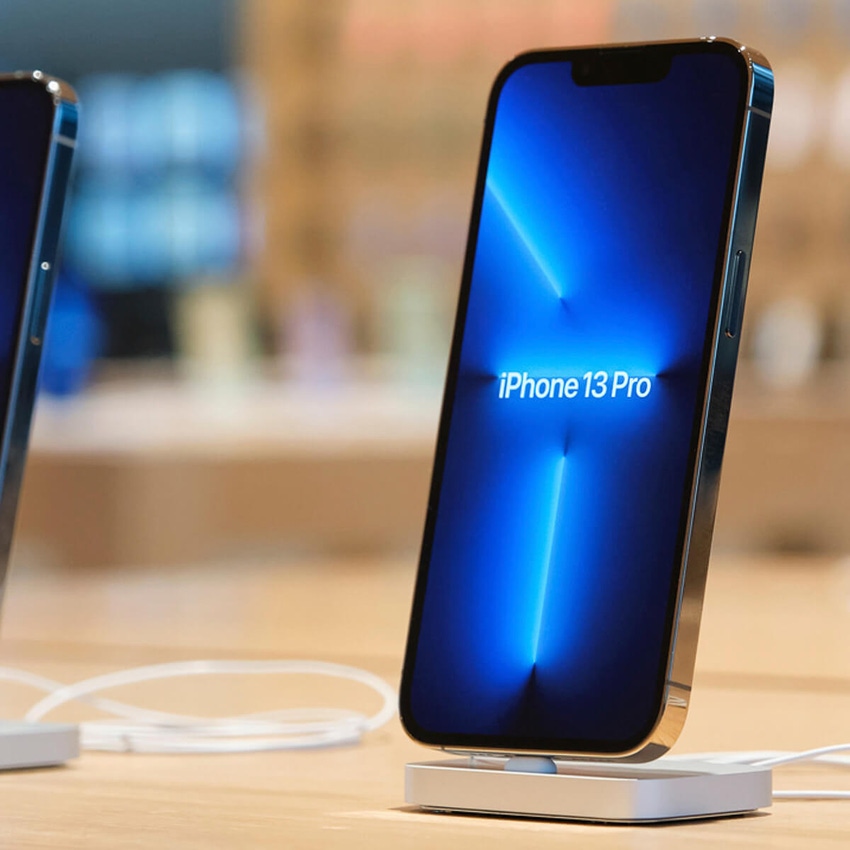
Apple is likely to slash its production target for next year for the iPhone 13 by up to 10 million because of chip shortages.
There was a time when Apple seemed immune to the chip shortage that afflicted other, more mortal companies. The tech giant spends more on chips just for the iPhone each year than the $40 billion for the entire auto industry.
In return, the biggest semiconductor suppliers, like Foxconn, have prioritised Apple. And 7.7 million fewer automobiles have been built this year, for want of silicon.
Figure 1:  Once it's gone: If you're in the market for an iPhone 13, you may want to make that purchase before the chip shortage catches up with Apple.
Once it's gone: If you're in the market for an iPhone 13, you may want to make that purchase before the chip shortage catches up with Apple.
(Source: Apple)
But even for Apple, all good things come to an end. Cupertino had planned to make 90 million of its new flagship iPhone model, but suppliers like Broadcom and Texas Institutes are struggling to deliver key components.
Apple paring down
It now has revised that figure to 80 million.
The silicon shortage began with a lockdown surge in sales for laptops, games consoles and televisions, which was then bolstered by a bounceback in auto sales.
Then foundries started shutting. First there was a freak burst of Arctic weather in Texas, of all places, shutting down the Samsung, NXP and Infineon semiconductor plants around Austin. More recently, Malaysian chip fabs began closing because of coronavirus outbreaks.
Tim Cook admitted earlier in the year that Apple had been using an emergency buffer supply of semiconductors to weather supply chain shortages. His company launched the iPhone 13 last month, in four models: the iPhone 13, the 13 mini, 13 Pro and the 13 Pro Max, which starts at $999, and is now preparing for a highly publicized Apple event next week on October 18 where it will launch new-look Macs and MacBooks.
He predicted in the middle of the year that the company would make $3-4 billion less in iPad and Mac sales in the third quarter than it would without the silicon shortages.
Analysts have forecast strong sales demand for the new iPhone 13 models, as customers seek to upgrade to access newly available 5G networks. But the company could see a shortage of over 5 million iPhones for the holiday season, say analysts at the investment firm Wedbush.
Follow Uncle Samsung
Apple is, therefore, following in the footsteps of Samsung, which shelved its Galaxy Note lineup and delayed the launch of its Galaxy S21 FE, likely to the fourth quarter of this year. Samsung took these moves so it could have enough silicon for its foldable smartphones.
Want to know more about 5G? Check out our dedicated 5G content channel here on
Light Reading.
These models, the Galaxy Z Fold 3 and Galaxy Z Flip 3, are breaking all the company's sales records but it still can't make as many as it needs to match demand.
Elsewhere, Sony and Microsoft, which have seen similar woes strike their PS5 and Xbox Series X, say they expect semiconductor supply chains to remain wobbly until late next year.
Apple's next earnings update is on October 28 - with Halloween following just around the corner, perhaps Tim Cook will have extra reason to look frightened.
Related posts:
— Pádraig Belton, contributing editor special to Light Reading
About the Author(s)
You May Also Like












